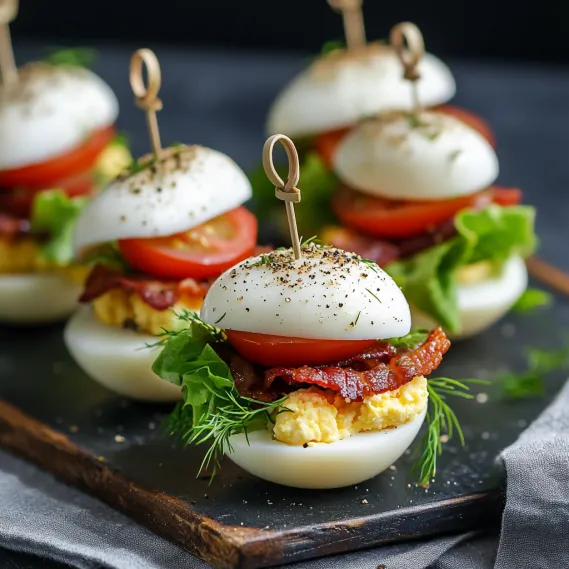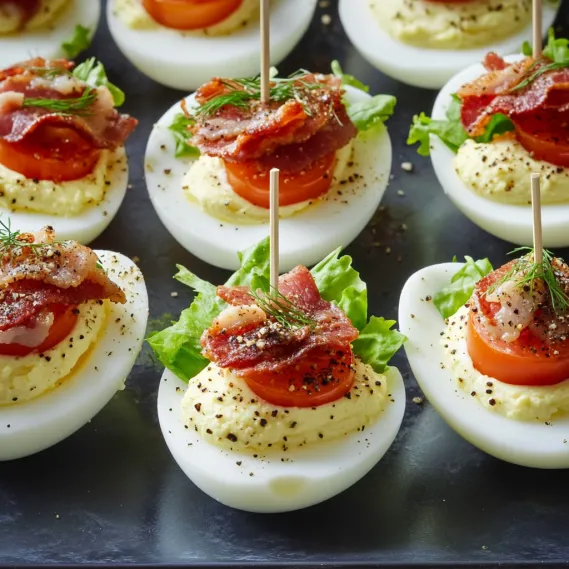 Pin
Pin
This hearty sushi cups recipe transforms traditional sushi into convenient, customizable bites that are perfect for entertaining or quick meals. These delightful little cups combine the flavors of classic sushi in an approachable, no-roll format that even sushi beginners can master with ease.
I first made these sushi cups for a last minute dinner party when I realized I had rice and veggies but not enough time for traditional rolls. They were such a hit that they've become my go to party appetizer when I want to impress without stress.
- Sushi Rice: Short grain variety creates the sticky texture needed for molding the cups
- Veggies: Choose colorful options like cucumber carrots and bell peppers for nutrition and visual appeal
- Steamed Mukimame: These shelled edamame beans add protein and a lovely pop of green
- Avocado: The creamy texture balances the rice perfectly look for ones that yield slightly to pressure
- Soy Sauce: Adds that classic umami flavor opt for low sodium if watching salt intake
- Mayonnaise: Creates the base for spicy mayo choose Japanese Kewpie mayo for authentic flavor
- Sriracha Sauce: Gives the spicy kick adjust amount based on your heat preference
- Honey: Natural sweetener that balances the heat of sriracha use local honey when possible
- Sesame Oil: Just a few drops transform the flavor profile with nutty depth
- Black Sesame Seeds: Add visual contrast and subtle nutty flavor toast them briefly for enhanced flavor
- Cook the Rice:
- Rinse rice thoroughly under cold water until water runs clear this removes excess starch that can make rice gummy. Combine with water in a saucepan using a 1 to 1.25 ratio. Bring to boil then reduce to simmer and cover until water is absorbed about 15 minutes. Let stand covered for 10 minutes before fluffing gently with a fork.
- Press into Cups:
- Allow rice to cool slightly until comfortable to handle but still warm for easier shaping. Lightly dampen your hands or spoon to prevent sticking. Press rice firmly into silicone muffin liners or greased standard muffin tin creating a hollow center for fillings. The walls should be about 1/4 inch thick and sturdy enough to hold fillings.
- Prepare Veggies:
- Dice vegetables into uniform small pieces about 1/4 inch for easy eating and visual appeal. Steam edamame according to package directions until bright green and tender about 3 minutes. Combine prepared vegetables and edamame in a bowl. Cut avocado just before assembling to prevent browning and gently fold into other ingredients with a small amount of soy sauce.
- Assemble:
- Carefully remove rice cups from molds and arrange on serving platter. Fill each cup generously with vegetable mixture mounding slightly. Mix mayonnaise with sriracha honey and a few drops of sesame oil to create spicy mayo. Drizzle sauce over filled cups using a squeeze bottle for precision. Finish with a delicate sprinkle of black sesame seeds for visual contrast and flavor.

The sesame oil is truly the secret ingredient in these cups. I discovered its importance completely by accident when I was out of my usual rice vinegar for sushi rice. Just a few drops transformed the entire dish elevating it from good to memorable. My daughter who typically avoids anything resembling sushi now requests these cups for her birthday dinners.
Make Ahead Tips
The rice cups can be prepared up to 24 hours in advance and stored covered in the refrigerator. Bring to room temperature before filling for best texture. The spicy mayo sauce can also be made ahead and stored in a squeeze bottle for easy assembly. Just give it a good shake before using.
Chop vegetables ahead of time and store in separate containers but wait to cut avocado until just before serving to prevent browning. If you need to prepare avocado in advance toss with a little lemon juice to maintain its color.
Complete cups can be assembled up to 2 hours before serving but are best enjoyed fresh. Cover loosely with plastic wrap but avoid pressing it directly onto the cups to maintain their shape and presentation.

Ingredient Substitutions
No sushi rice? Arborio rice makes a good substitute as it has similar sticky properties when cooked. Regular short grain rice will work in a pinch but will be less cohesive.
Vegan guests? Replace mayonnaise with vegan mayo and use agave instead of honey in the spicy sauce. Add some thinly sliced mango for a sweet element that complements the other flavors beautifully.
Seafood lovers can add small pieces of cooked shrimp imitation crab or even raw sashimi grade fish on top for a more traditional sushi experience. Just be sure to keep properly chilled if using raw fish.
For a fun twist substitute quinoa for half the rice to add protein and a different texture. The rice will still hold together while offering additional nutritional benefits and a slightly nutty flavor.
Cultural Context
Sushi cups represent a modern twist on traditional Japanese sushi which dates back to the 8th century. Originally sushi was a preservation method where fish was fermented with rice which was later discarded. The form we know today with fresh fish and seasoned rice emerged in the early 19th century.
This deconstructed version maintains the essence of traditional sushi while adapting to contemporary preferences for customization and ease. The concept honors Japanese culinary traditions while making them accessible to home cooks without specialized training or equipment.
Recipe FAQs
- → How do I make the rice for sushi cups?
Start by rinsing the sushi rice thoroughly, then cook it by simmering with water until tender and sticky. The sticky texture helps the rice hold its shape in the cups.
- → What kind of veggies can I use?
Pick raw veggies like carrots, cucumbers, bell peppers, or sprouts. Chop them finely for easy mixing and a great texture.
- → What is mukimame, and where can I find it?
Mukimame is shelled edamame, available in the frozen section near regular edamame. It's a great source of protein and easy to prepare.
- → Can these be made ahead of time?
You can prepare the rice and chop the veggies ahead of time. Assemble just before serving to maintain freshness and avoid soggy rice.
- → How can I customize sushi cups?
Experiment with different sauces like tamari, coconut aminos, or teriyaki. Swap in your favorite raw veggies or even add cooked shrimp or crab for extra flavor.
